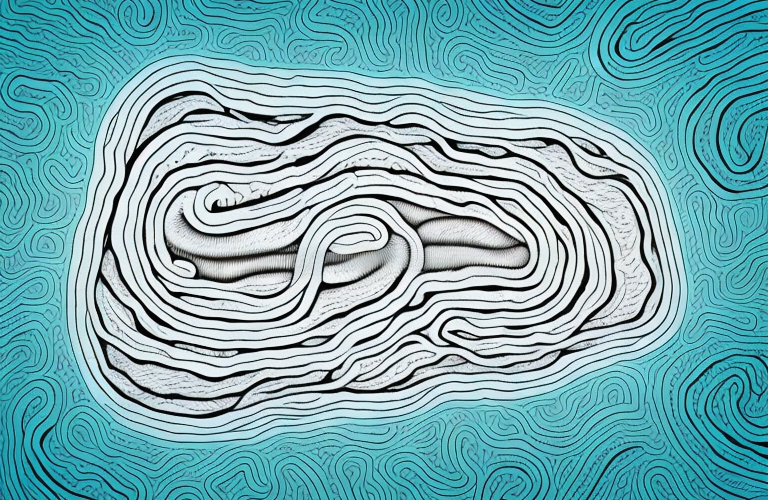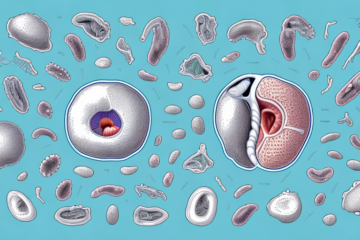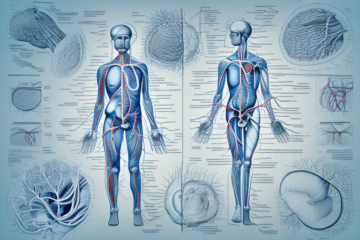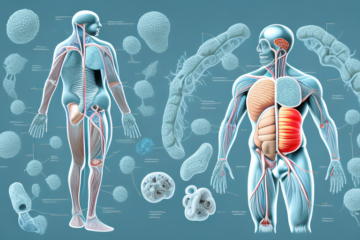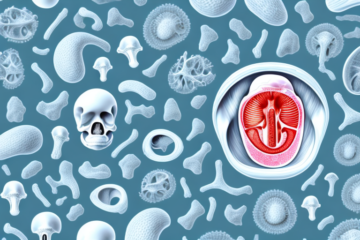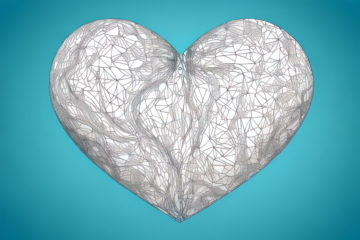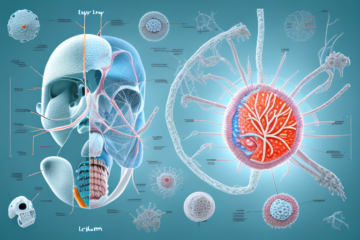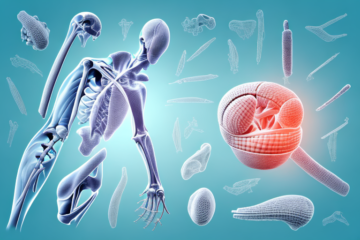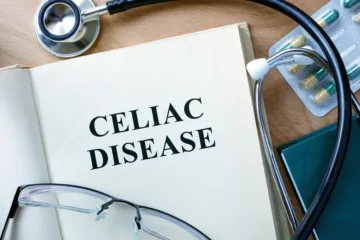The small intestine is a vital organ in the digestive system, responsible for the digestion and absorption of nutrients from the food we eat. It is a long, narrow tube that is approximately 20 feet in length, and it extends from the stomach to the large intestine. In this article, we will discuss the function, anatomy, and disorders of the small intestine in detail.
Location of the Small Intestine in the Digestive System
The small intestine is the second part of the digestive system, and it is located between the stomach and the large intestine. It is connected to the stomach through the pyloric sphincter and to the large intestine through the ileocecal valve. The small intestine is divided into three parts: the duodenum, the jejunum, and the ileum.
The small intestine plays a crucial role in the digestion and absorption of nutrients from food. The walls of the small intestine are lined with tiny finger-like projections called villi, which increase the surface area for absorption. The small intestine also receives digestive enzymes from the pancreas and bile from the liver, which help break down fats and proteins. Overall, the small intestine is a vital component of the digestive system, responsible for extracting nutrients from food and delivering them to the rest of the body.
Structure of the Small Intestine
The small intestine is a muscular tube that is lined with millions of tiny finger-like projections called villi. The villi play a crucial role in the absorption of nutrients from the food we eat. The small intestine is also composed of three layers: the epithelium, the lamina propria, and the muscularis externa. The epithelium is the innermost layer and is responsible for the absorption of nutrients. The lamina propria is the middle layer and is composed of connective tissue. The muscularis externa is the outermost layer and is composed of smooth muscle tissue.
In addition to its structural composition, the small intestine also contains a variety of enzymes and digestive juices that aid in the breakdown of food. These enzymes are produced by the pancreas and the small intestine itself. The small intestine is also home to a diverse population of microorganisms, collectively known as the gut microbiome. These microorganisms play a crucial role in maintaining the health of the digestive system and have been linked to a range of health benefits, including improved immune function and reduced risk of certain diseases.
Divisions of the Small Intestine: Duodenum, Jejunum, and Ileum
The small intestine is divided into three parts: the duodenum, the jejunum, and the ileum. The duodenum is the first part of the small intestine and is responsible for the digestion of food. The jejunum is the second part of the small intestine and is responsible for the absorption of nutrients. The ileum is the third part of the small intestine and is also responsible for the absorption of nutrients.
In addition to its digestive and absorptive functions, the small intestine also plays a crucial role in the immune system. It contains specialized cells called Peyer’s patches, which help to identify and fight off harmful bacteria and viruses that enter the body through the digestive tract.
Another important feature of the small intestine is its extensive surface area. The inner lining of the small intestine is covered in tiny finger-like projections called villi, which increase the surface area available for nutrient absorption. This allows for efficient absorption of nutrients from food, which is essential for maintaining overall health and wellbeing.
Length and Diameter of the Small Intestine
The length and diameter of the small intestine vary in different individuals. On average, the small intestine is approximately 20 feet in length and 1 inch in diameter.
However, the length and diameter of the small intestine can change depending on certain factors such as age, diet, and medical conditions. For example, in infants, the small intestine is shorter and wider compared to adults. Additionally, a diet high in fiber can increase the diameter of the small intestine, while certain medical conditions such as Crohn’s disease can cause the small intestine to become narrower.
Layers of the Small Intestinal Wall: Epithelium, Lamina Propria, and Muscularis Externa
The small intestinal wall is composed of three layers: the epithelium, the lamina propria, and the muscularis externa. The epithelium is the innermost layer and is responsible for the absorption of nutrients. The lamina propria is the middle layer and is composed of connective tissue. The muscularis externa is the outermost layer and is composed of smooth muscle tissue.
In addition to these three layers, the small intestine also has specialized structures called villi and microvilli. Villi are finger-like projections that protrude from the epithelium and increase the surface area for nutrient absorption. Microvilli are even smaller projections that cover the surface of the villi and further increase the surface area. Together, villi and microvilli greatly enhance the small intestine’s ability to absorb nutrients from digested food.
Blood Supply and Innervation of the Small Intestine
The small intestine receives blood supply from the superior mesenteric artery and is innervated by the enteric nervous system. The enteric nervous system is responsible for the regulation of small intestinal motility.
In addition to its role in regulating small intestinal motility, the enteric nervous system also plays a crucial role in the secretion of digestive enzymes and the absorption of nutrients in the small intestine. This complex network of neurons and neurotransmitters is able to sense changes in the luminal environment and adjust the activity of the small intestine accordingly, ensuring efficient digestion and absorption of nutrients.
Digestion and Absorption in the Small Intestine
The small intestine is responsible for the digestion and absorption of nutrients from the food we eat. Nutrients are broken down into their simplest forms and then absorbed into the bloodstream. Carbohydrates are broken down into simple sugars, proteins are broken down into amino acids, and fats are broken down into fatty acids and glycerol.
In addition to breaking down nutrients, the small intestine also plays a crucial role in the immune system. It contains specialized cells that help to identify and destroy harmful bacteria and viruses that may be present in the food we eat.
The small intestine is also responsible for regulating the release of hormones that help to control blood sugar levels and appetite. These hormones include insulin, glucagon, and leptin, which are all important for maintaining a healthy metabolism and preventing conditions such as diabetes and obesity.
Enzymes Involved in Digestion in the Small Intestine: Amylase, Lipase, Proteases
Several enzymes are involved in the digestion of nutrients in the small intestine. Amylase is responsible for the digestion of carbohydrates, lipase is responsible for the digestion of fats, and proteases are responsible for the digestion of proteins.
In addition to these enzymes, the small intestine also produces other digestive enzymes such as lactase, sucrase, and maltase, which are responsible for breaking down lactose, sucrose, and maltose respectively. These enzymes are important for individuals who may have lactose intolerance or other digestive issues related to these sugars.
Role of Bile in Digestion and Absorption in the Small Intestine
Bile is produced by the liver and is stored in the gallbladder. It plays a crucial role in the digestion and absorption of fats in the small intestine. Bile emulsifies fats, making them easier to digest and absorb.
In addition to its role in fat digestion and absorption, bile also helps to eliminate waste products from the body. It contains bilirubin, a waste product from the breakdown of red blood cells, which gives bile its characteristic yellow-green color. Bile is excreted from the body through the feces, which is why changes in stool color can sometimes indicate liver or gallbladder problems.
Villi and Microvilli: Structures for Nutrient Absorption in the Small Intestine
The villi and microvilli are tiny finger-like projections that line the inner surface of the small intestine. They increase the surface area of the small intestine, allowing for the efficient absorption of nutrients.
Each villus contains a network of capillaries and a lymphatic vessel called a lacteal. These structures work together to transport nutrients from the small intestine to the rest of the body. The capillaries absorb nutrients like glucose and amino acids, while the lacteal absorbs fats and fat-soluble vitamins. This complex system ensures that all the nutrients we consume are properly absorbed and utilized by the body.
Transport Mechanisms for Nutrients Across the Small Intestinal Epithelium: Active Transport, Passive Diffusion, Facilitated Diffusion
Nutrients are transported across the small intestinal epithelium through various mechanisms, including active transport, passive diffusion, and facilitated diffusion. Active transport requires energy, while passive diffusion and facilitated diffusion do not.
Active transport is the process by which nutrients are transported against their concentration gradient, from an area of low concentration to an area of high concentration. This process requires energy in the form of ATP, which is provided by the cell. Passive diffusion, on the other hand, is the movement of nutrients from an area of high concentration to an area of low concentration, without the need for energy. Facilitated diffusion is similar to passive diffusion, but it requires the presence of a carrier protein to transport the nutrients across the membrane.
Regulation of Small Intestinal Motility: Peristalsis, Segmentation, Migrating Motor Complexes
The regulation of small intestinal motility is controlled by the enteric nervous system. Peristalsis, segmentation, and migrating motor complexes are the three types of contractions that occur in the small intestine. Peristalsis moves food through the small intestine, segmentation mixes food with digestive juices, and migrating motor complexes help sweep any remaining debris from the small intestine.
In addition to the enteric nervous system, hormones also play a role in regulating small intestinal motility. For example, the hormone motilin stimulates the occurrence of migrating motor complexes. Additionally, the presence of food in the stomach and small intestine triggers the release of hormones such as gastrin and cholecystokinin, which can affect the rate and strength of contractions in the small intestine.
Disorders of the Small Intestine: Celiac Disease, Crohn’s Disease, Irritable Bowel Syndrome (IBS), Malabsorption Syndromes
The small intestine is susceptible to various disorders, including celiac disease, Crohn’s disease, irritable bowel syndrome (IBS), and malabsorption syndromes. Celiac disease and Crohn’s disease are autoimmune disorders that affect the small intestine’s lining. IBS is a functional disorder that affects the way the small intestine works. Malabsorption syndromes are a group of disorders that affect the small intestine’s ability to absorb nutrients.
It is important to note that these disorders can have overlapping symptoms, making it difficult to diagnose them accurately. Celiac disease, for example, can present with symptoms similar to IBS, such as bloating, abdominal pain, and diarrhea. Crohn’s disease can also cause similar symptoms, but it can also lead to more severe complications, such as intestinal blockages and fistulas. Malabsorption syndromes can result in nutrient deficiencies, leading to a range of symptoms, including fatigue, weakness, and weight loss. Therefore, it is crucial to seek medical attention if you experience any persistent digestive symptoms.
Diagnostic Tests for Small Intestinal Disorders: Endoscopy, Biopsy, Blood Tests
Several diagnostic tests are available for small intestinal disorders, including endoscopy, biopsy, and blood tests. Endoscopy allows for a visual examination of the small intestine, while a biopsy involves the removal of a tissue sample for analysis. Blood tests can detect certain antibodies and markers that indicate small intestinal disease.
In conclusion, the small intestine is an essential organ in the digestive system responsible for the digestion and absorption of nutrients from the food we eat. Understanding the structure, function, and disorders of the small intestine can help us maintain good digestive health and overall well-being.
It is important to note that these diagnostic tests are not always conclusive and may require further testing or imaging to confirm a diagnosis. Additionally, some small intestinal disorders may not present with obvious symptoms, making it crucial to undergo regular check-ups and screenings to detect any potential issues early on.

